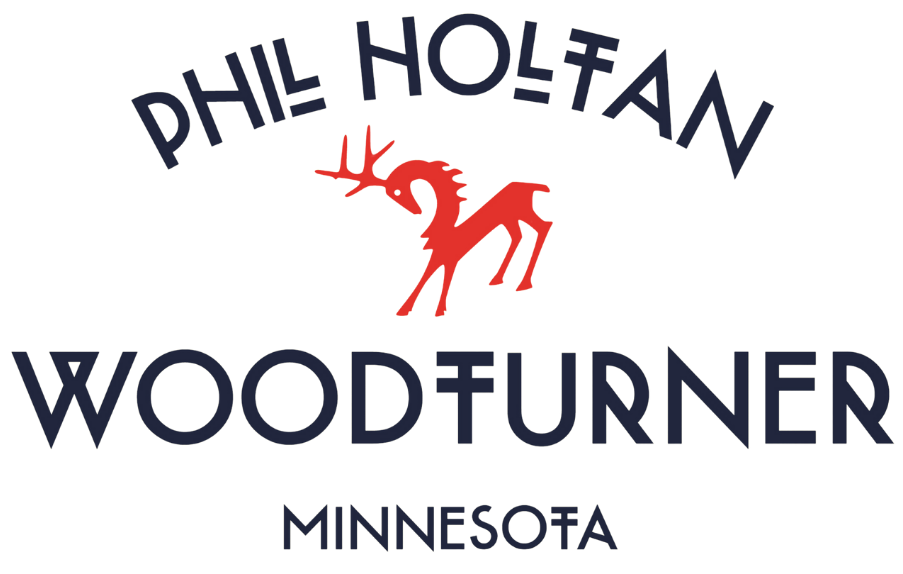From a Burl to a Bowl
Below you see the same section of the burl from the end grain. You notice the bark inclusion extending down into the burl. That bark inclusion was hinted to by the cracks above and we placed our discs to avoid that area. There is a smaller crack just to the left of the bark inclusion that is also a plane of weakness for the bowl and I’d rather avoid it.
Finished bowl, with from 3-7 bowls within bowls.
Phil has turned thousands of burls in a number of species into his signature natural-edged bowls.
He begins by examining the burl to identify areas of the burl to avoid or work around, like cracks, bark inclusions, holes, rotten areas and insect activity. Then he will show how to use cardboard discs of different diameters to visualize the best use of the burl,
Next, using videos and slide, he will show how he uses the chain saw and then the band saw to section the burl, always aiming to get the largest bowls and the highest yield from each burl.
Third, again, using chunks of burl and slides, he will show how to place those wedges onto the band saw to use a vertical side of the blank that is sufficient size to orient a right angle cut of a flat plane on the bowl blank and then cut a circle at the edges of the cardboard disc.
Finally, he will mount that bowl blank onto the lathe and prepare to use the McNaughton coring system to turn multiple bowls from each wedge. In the limited time of the presentation, he will then cut at least the largest, outside core(s) from the burl. Compared to the roughly cylindrical bowl blank of a bowl blank but from the normal wood trunk, a burl blank is much more random and difficult to orient on the lathe. Phil will almost surely do some repositioning of the driving and/or tail center as the cutting proceeds. While he will not finish the stack, he will show how . his wedges yield 2 or 3 from a small burl or section of a burl, to stacks of 6-7 with largest diameters of 14-15 inches. His biggest burls yield 80-100 bowls each.











